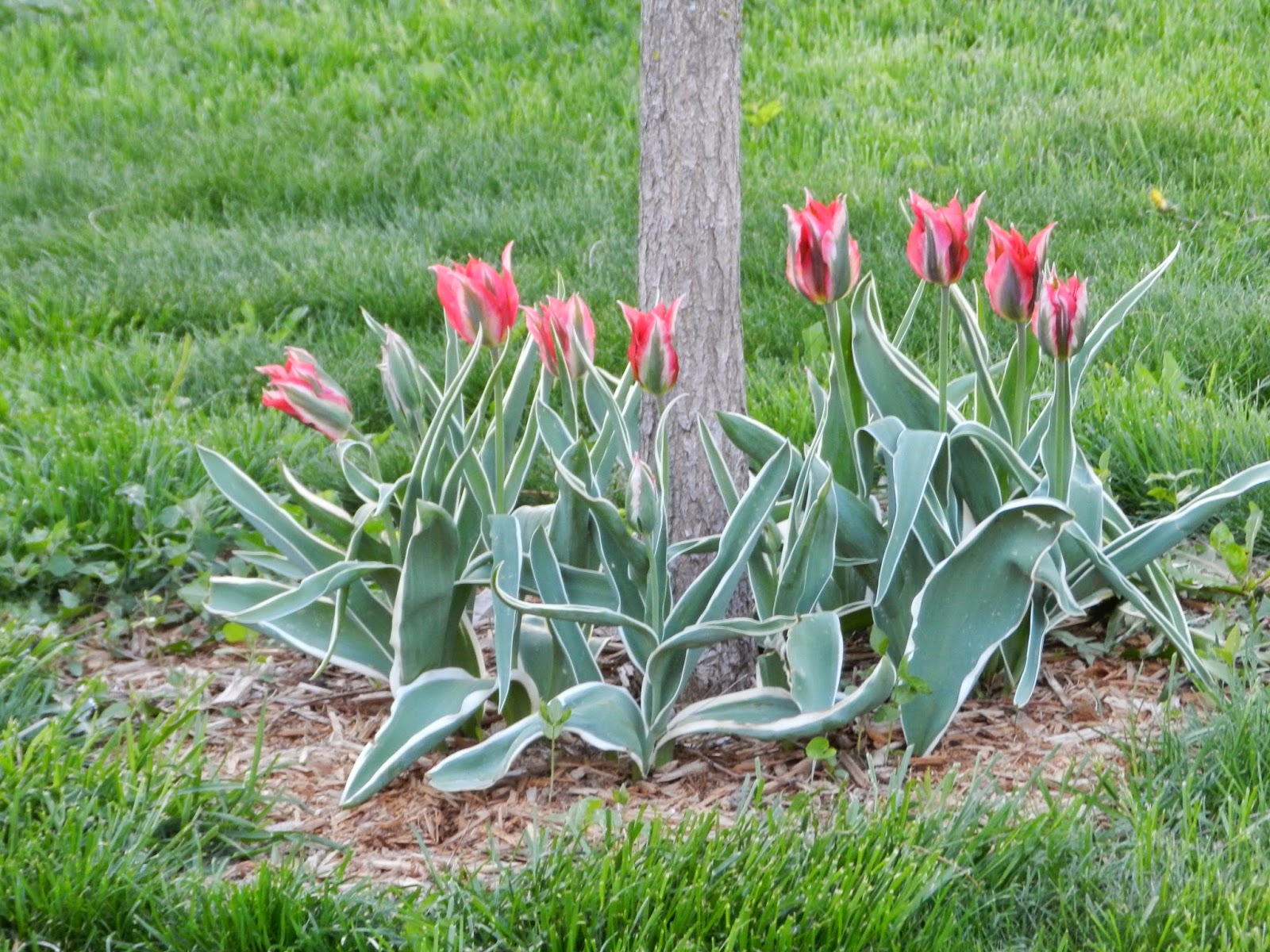Charles Spurgeon once said, “Carve your name on hearts, not on marble.”
.JPG) |
| Bleeding Hearts look lovely in a vase combined with other spring flowers and last well over a week. |
A little horticulture description taken straight from the book before we get into the fun stuff:
"It's a bush herbaceous plant with numerous red-dish-glaucous green stems. Its alternate leaves are pluriternate in cordite trilobite segments. The numerous pendulous flowers are borne in delightful lax arcuate racemes and are distinguished for their rose-pink calyx and white corolla. The plant flowers freely and for a long time." Yes, there's a reason I don't usually go into a perfectly accurate "by the book" description.
The deal is this plant comes in either typical 32 inch height or the 10 inch dwarf variety. The flowers look like hearts hanging down with a little tear dripping off the bottom (more on the lore later.) This plant originated in Manchuria and Korea although some other Asian countries take credit. It blooms in spring through early summer and will sometimes have a few blooms later in the season.
It should be planted in a partial to fully shaded area in an open but protected site. Wind can beat it to death because the stems are rather fragile. Late frosts can also damage the plant but it won't die. It prefers a light, porous soil that is either naturally rich or enriched with plenty of leaf mold and peat. It must be kept watered in the spring but the roots will rot if it sits in water. In other words, our Illinois springs are perfect.
It's wise to plant other perennials around bleeding heart because they die back in late summer and need to be cut to make the garden neat again. You'll have a bare spot if there are no other perennials to fill in around them. Medium sized hosta does this well.
 |
| Wild Bleeding Heart (North Creek Nursery) |
There is a wild bleeding heart "Dicentra eximia" that can be found in Illinois and is considered a native plant. The flowers are more elongated and the leaves are finely divided. It's only 10-18 inches tall and blooms May through August. Usually found in rocky woods and on cliffs.
There are several other varieties with all white flowers, white with purple lines and shades of rose-red flowers. There is the bright chartreuse leaf plant in addition to the mat-green traditional variety.
Now the fun stuff:
The pink variety has a white "tear" off the bottom signifying in lore a broken heart.
An old Japanese story divides the flower into six pieces. They resemble two pink rabbits, two pair of earrings, two pair of oriental slippers and finally a dagger. The gifts were each given to entice the young woman to marry her suitor. After each gift, she declined his offer. Finally, he stabbed himself through the heart and you see the drop of blood at the bottom of each flower where his blood went into the soil. Out of that place the first bleeding heart plant grew. I know a cheerful tale but one little kids love.
 |
| Even though my photos are in full sun in the spring, this plant is shaded both in the early morning and in the afternoon. |
My experience: I find the bleeding heart plants at local nurseries are more apt to survive. They are usually larger, hardened off better and not beat up in shipping.

.JPG)
.JPG)








.JPG)
.JPG)

.JPG)
.JPG)
.JPG)
.JPG)

.JPG)



.JPG)


.JPG)




.JPG)



.JPG)
